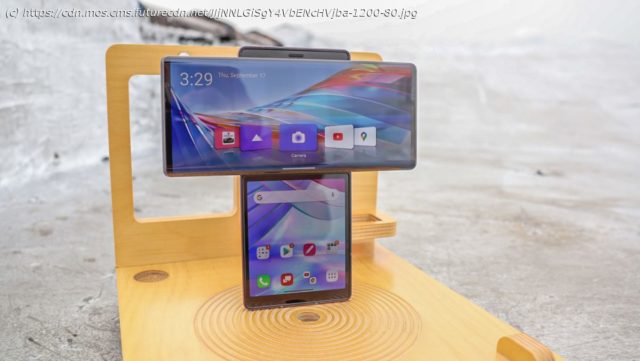The LG Wing 5G is a unique take on multi-screen phones, swiveling out the main display to reveal another underneath. But is it useful?
Outside of expensive foldables, phone design has stagnated in the last few years, and most coming out these days rarely varying from an edge-to-edge glass rectangle. The LG Wing 5G is a bold exception: a phone with a front screen that swivels horizontally and upward to reveal a smaller display underneath, providing more screen real estate in a device that you can use one-handed It’s the sort of mechanism we saw on some of the many experimental phone designs that came out in the 2000s. In particular, the LG Wing 5G feels a lot like the Danger Hiptop (known better as the T-Mobile Sidekick – remember carrier-specific phone names?) but modernized for 2020. Similar to the Microsoft Surface Duo, the mini-screen can give you more space for a single app – though in the LG Wing 5G’s case, with the content on one screen and controls on the other – or you can use it to display a second, separate app, letting you type notes or text friends while watching media on the main display, say. When closed, the phone looks and operates just like any handset, and although it’s a little thicker and heavier than most others, it’s still closer in size to a regular phone than a chunky foldable like Samsung Galaxy Z Fold 2. You could use it as a perfectly functional one-screen phone, if you really wanted to. Of course, if you’ve got the LG Wing 5G you’ll be wanting to swivel the display out. Actually rotating it open isn’t difficult, even one-handed, but there’s also enough resistance that the main screen won’t slide up accidentally in your pocket. The phone is constructed in two ‘layers’, with the main screen sitting on the top layer, which takes up about a third of the thickness of the phone. It swivels out and up to the top of the device, exposing the mini-screen and forming a ‘T’-shape. This essentially increases the display real estate by half again, and you could be forgiven for thinking at this point that the smaller screen isn’t too helpful. However, while not all apps will fit and work on it, having this dedicated area for secondary apps and tasks is useful in theory; imagine being able to fire off a text, or Google the odd fact, without having to switch away from the show or stream you’re watching or the game you’re playing. There’s other unique applications of the extra screen, like using it as a touchpad while browsing online for precise control. Even better, swivel out while in camera mode and the mini-screen will show simulated gimbal controls for precisely following subjects thanks to image stabilization software. Combine that with the pop-up selfie camera, which allows you to simultaneously record rear and front-facing footage – great for streamers, say. In other words, the format has a lot of potential; in practice, the one-and-a-half screens take some time to use effectively, because the software isn’t quite intuitive yet. LG got the basics down of transitioning between swivel modes, but loading up apps on either screen is convoluted. A successor might make it as easy as swiping an app from one screen to the next, but not the LG Wing 5G. Thus, you’ll have to learn some workflows (manually setting up app pairs) to actually use the extra screen to its current potential. When you do, it’s neat, though you’ll still yearn for a more fluid interface, more apps supporting the smaller screen, and more novel applications. LG has made some compromises to keep costs low enough for it to reach a price tier comparable to most top-tier smartphones like the Samsung Galaxy S20 and the iPhone 12 Pro. Compared to those phones, the LG Wing 5G gives up photo capabilities (like any optical zoom) for its extra screen real estate. You can count those deficiencies on one hand, though: the LG Wing 5G has respectable specs and an admirable main display, making it competitive even without its swivel functionality. The LG Wing was announced on September 14 and its release date was on October 15 in the US, though it’s unclear when it will come to other regions.






